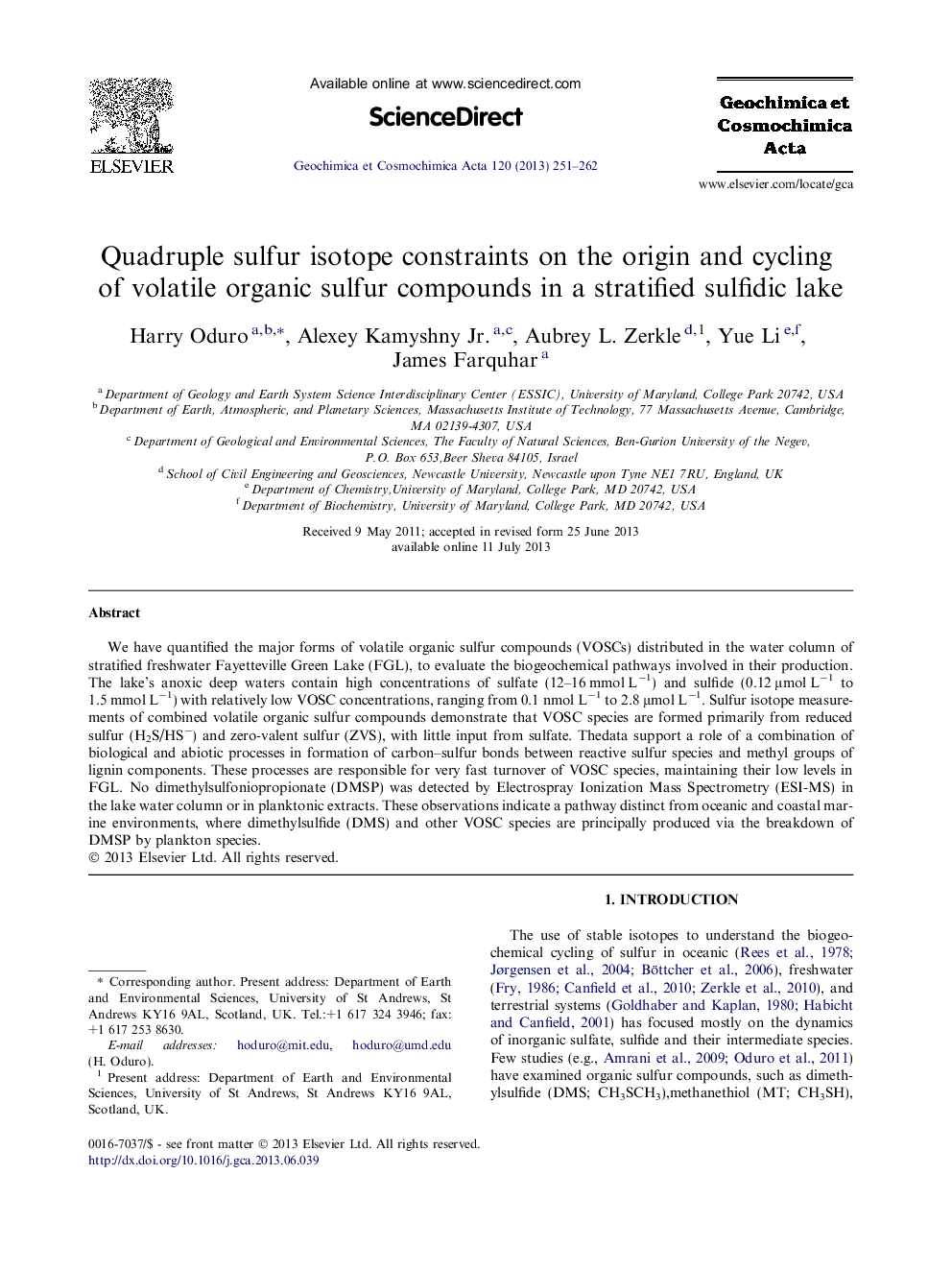| Article ID | Journal | Published Year | Pages | File Type |
|---|---|---|---|---|
| 6438988 | Geochimica et Cosmochimica Acta | 2013 | 12 Pages |
Abstract
We have quantified the major forms of volatile organic sulfur compounds (VOSCs) distributed in the water column of stratified freshwater Fayetteville Green Lake (FGL), to evaluate the biogeochemical pathways involved in their production. The lake's anoxic deep waters contain high concentrations of sulfate (12-16 mmol Lâ1) and sulfide (0.12 μmol Lâ1 to 1.5 mmol Lâ1) with relatively low VOSC concentrations, ranging from 0.1 nmol Lâ1 to 2.8 μmol Lâ1. Sulfur isotope measurements of combined volatile organic sulfur compounds demonstrate that VOSC species are formed primarily from reduced sulfur (H2S/HSâ) and zero-valent sulfur (ZVS), with little input from sulfate. Thedata support a role of a combination of biological and abiotic processes in formation of carbon-sulfur bonds between reactive sulfur species and methyl groups of lignin components. These processes are responsible for very fast turnover of VOSC species, maintaining their low levels in FGL. No dimethylsulfoniopropionate (DMSP) was detected by Electrospray Ionization Mass Spectrometry (ESI-MS) in the lake water column or in planktonic extracts. These observations indicate a pathway distinct from oceanic and coastal marine environments, where dimethylsulfide (DMS) and other VOSC species are principally produced via the breakdown of DMSP by plankton species.
Related Topics
Physical Sciences and Engineering
Earth and Planetary Sciences
Geochemistry and Petrology
Authors
Harry Oduro, Alexey Jr., Aubrey L. Zerkle, Yue Li, James Farquhar,
